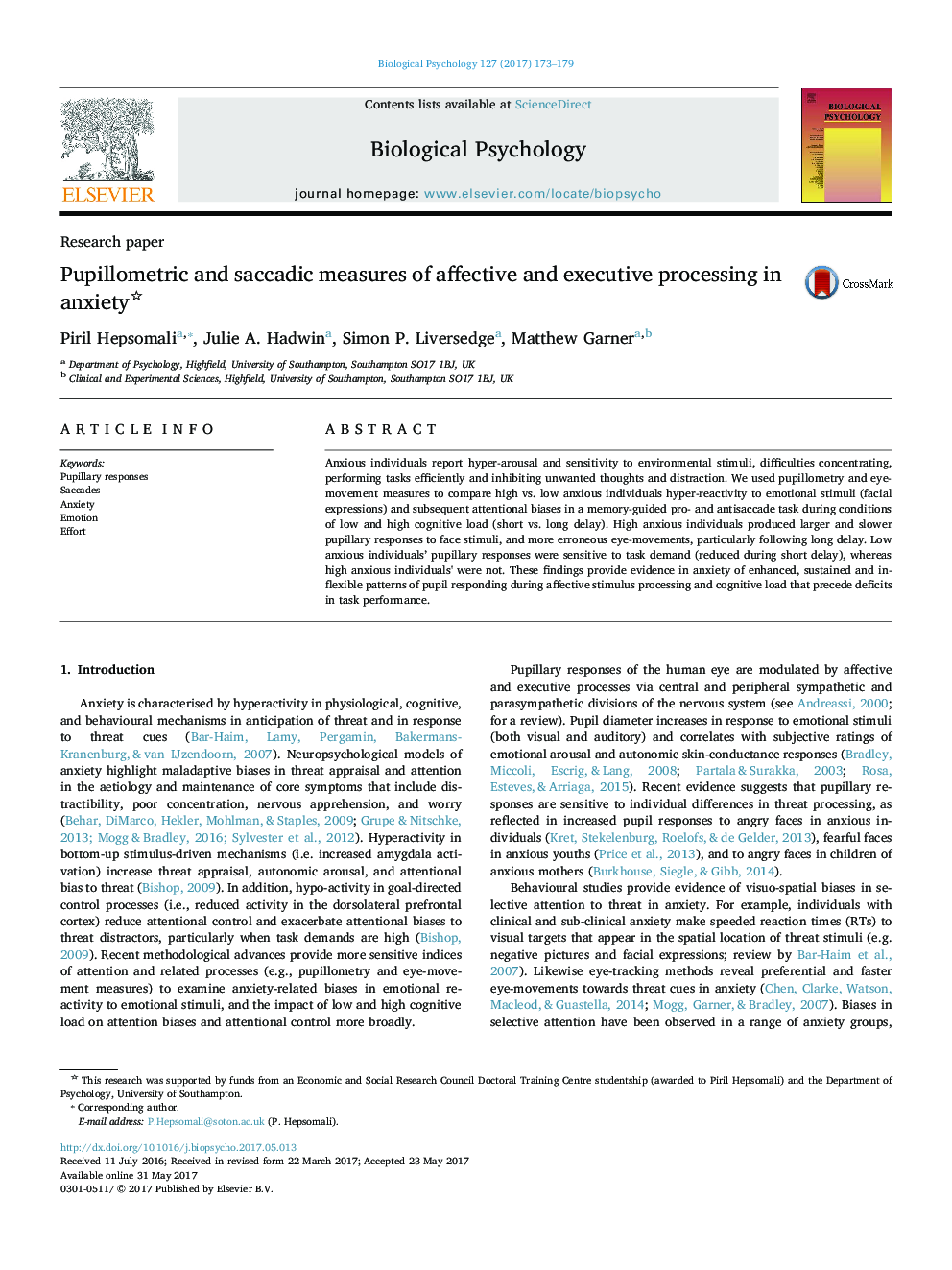| Article ID | Journal | Published Year | Pages | File Type |
|---|---|---|---|---|
| 5040490 | Biological Psychology | 2017 | 7 Pages |
â¢Anxious individuals produce elevated and longer pupil responses to emotional faces.â¢Elevated pupil responses in anxious individuals are insensitive to changes in task demand (long vs. short delay), conversely low anxious individuals' pupil responses vary with task demand.â¢Anxious individuals subsequently make more eye-movement errors in an oculomotor delay task, particularly when task demands are high (i.e. following a long delay).
Anxious individuals report hyper-arousal and sensitivity to environmental stimuli, difficulties concentrating, performing tasks efficiently and inhibiting unwanted thoughts and distraction. We used pupillometry and eye-movement measures to compare high vs. low anxious individuals hyper-reactivity to emotional stimuli (facial expressions) and subsequent attentional biases in a memory-guided pro- and antisaccade task during conditions of low and high cognitive load (short vs. long delay). High anxious individuals produced larger and slower pupillary responses to face stimuli, and more erroneous eye-movements, particularly following long delay. Low anxious individuals' pupillary responses were sensitive to task demand (reduced during short delay), whereas high anxious individuals' were not. These findings provide evidence in anxiety of enhanced, sustained and inflexible patterns of pupil responding during affective stimulus processing and cognitive load that precede deficits in task performance.
